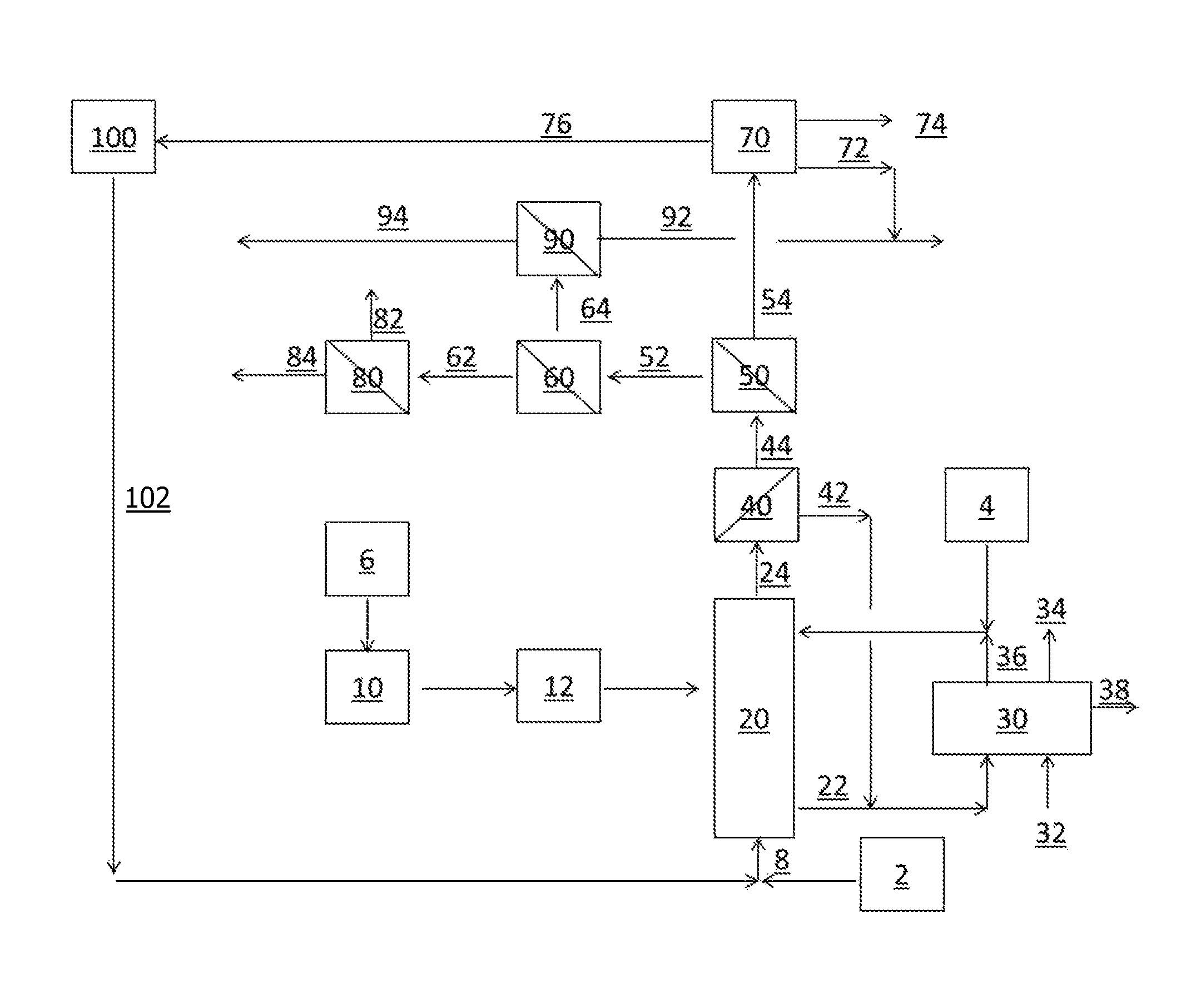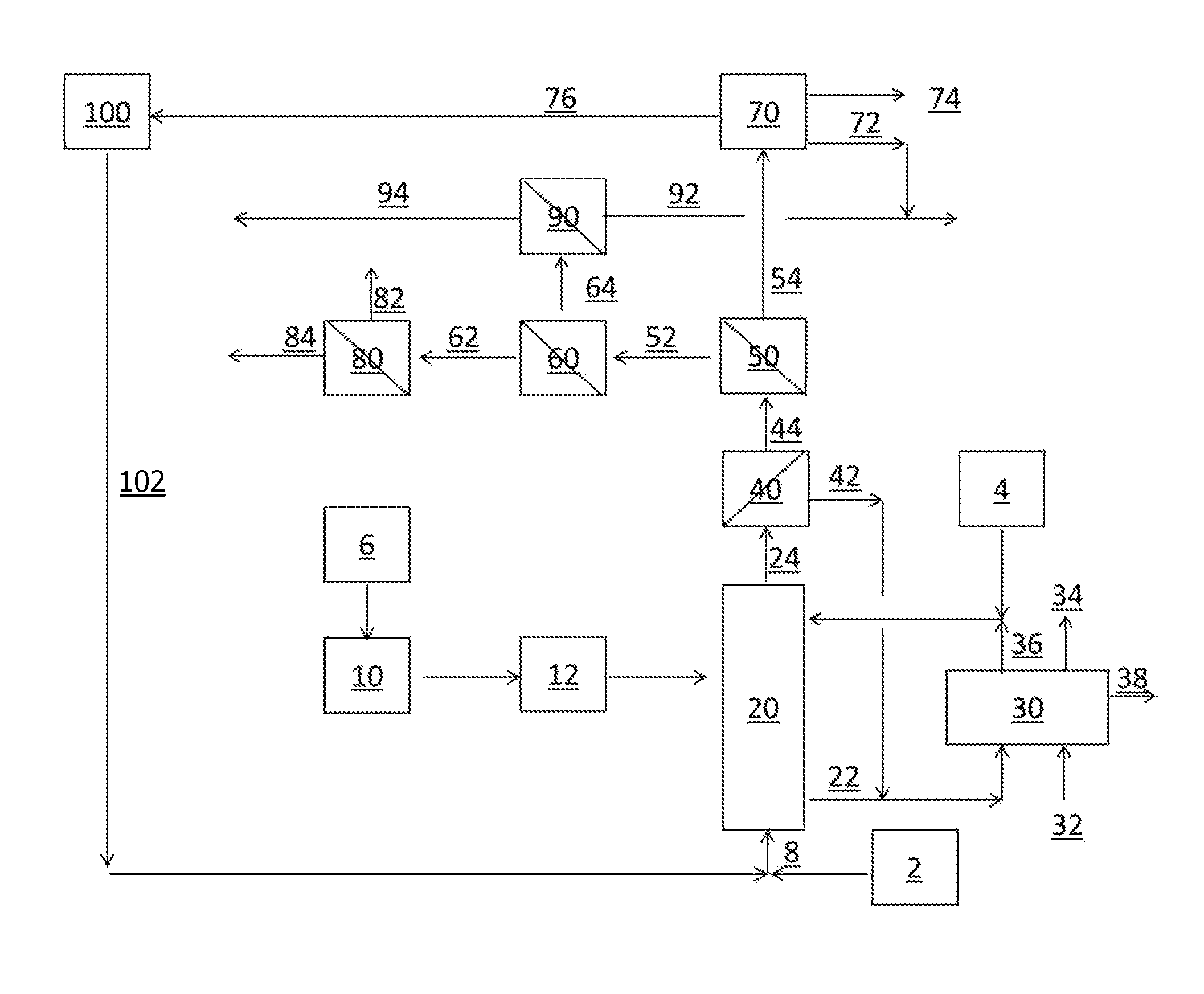Fast catalytic pyrolysis with recycle of side products
a catalytic pyrolysis and side product technology, applied in the field of fast catalytic pyrolysis with side product recycling, can solve the problems of thermal instability, liquid product mixture, and inability to meet the criteria of app nor syngas process, and achieve the effect of convenient transportation and less processing
- Summary
- Abstract
- Description
- Claims
- Application Information
AI Technical Summary
Benefits of technology
Problems solved by technology
Method used
Image
Examples
Embodiment Construction
[0064]In this invention, a liquid that is recovered from a pyrolysis reaction, preferably pyrolysis of biomass, is, optionally, subjected to a treatment or treatments, and the liquid phase or a product from the liquid phase is returned to a pyrolysis reactor. Typically, the liquid phase or product is returned to the same pyrolysis reactor from which the liquid phase was condensed; however, in any of the embodiments herein, it is contemplated that multiple reactors could be used in combination and the liquid phase or product could be transferred to a different pyrolysis reactor and / or to multiple reactors.
[0065]Condensation of condensable materials from the pyrolysis products occurs by passing them through a condensation train to condense and collect the desired products as liquid phases. Typically, the condensation train will comprise one or more chilled water condensers, one or more electrostatic precipitator and one or more coalescence filter, as are well known in the art, all of ...
PUM
| Property | Measurement | Unit |
|---|---|---|
| mass % | aaaaa | aaaaa |
| pressure | aaaaa | aaaaa |
| temperatures | aaaaa | aaaaa |
Abstract
Description
Claims
Application Information
 Login to View More
Login to View More - R&D
- Intellectual Property
- Life Sciences
- Materials
- Tech Scout
- Unparalleled Data Quality
- Higher Quality Content
- 60% Fewer Hallucinations
Browse by: Latest US Patents, China's latest patents, Technical Efficacy Thesaurus, Application Domain, Technology Topic, Popular Technical Reports.
© 2025 PatSnap. All rights reserved.Legal|Privacy policy|Modern Slavery Act Transparency Statement|Sitemap|About US| Contact US: help@patsnap.com


